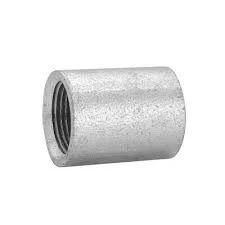-
Cangzhou Yulong Steel Co., Ltd.
-
Phone:
+86 13303177267 -
Email:
admin@ylsteelfittings.com
- English
- Arabic
- Italian
- Spanish
- Portuguese
- German
- kazakh
- Persian
- Greek
- French
- Russian
- Polish
- Thai
- Indonesian
- Vietnamese
- Zulu
- Korean
- Uzbek
- Hindi
- Serbian
- Malay
- Ukrainian
- Gujarati
- Haitian Creole
- hausa
- hawaiian
- Hebrew
- Miao
- Hungarian
- Icelandic
- igbo
- irish
- Japanese
- Javanese
- Kannada
- Khmer
- Rwandese
- Afrikaans
- Albanian
- Amharic
- Armenian
- Azerbaijani
- Basque
- Belarusian
- Bengali
- Bosnian
- Bulgarian
- Catalan
- Cebuano
- China
- China (Taiwan)
- Corsican
- Croatian
- Czech
- Danish
- Esperanto
- Estonian
- Finnish
- Frisian
- Galician
- Georgian
- Kurdish
- Kyrgyz
- Lao
- Latin
- Latvian
- Lithuanian
- Luxembourgish
- Macedonian
- Malgashi
- Malayalam
- Maltese
- Maori
- Marathi
- Mongolian
- Myanmar
- Nepali
- Norwegian
- Norwegian
- Occitan
- Pashto
- Dutch
- Punjabi
- Romanian
- Samoan
- Scottish Gaelic
- Sesotho
- Shona
- Sindhi
- Sinhala
- Slovak
- Slovenian
- Somali
- Sundanese
- Swahili
- Swedish
- Tagalog
- Tajik
- Tamil
- Tatar
- Telugu
- Turkish
- Turkmen
- Urdu
- Uighur
- Welsh
- Bantu
- Yiddish
- Yoruba

Nov . 16, 2024 04:15 Back to list
Hydraulic Flange Connectors for Reliable Fluid Transfer Applications
Understanding Hydraulic Flange Fittings
Hydraulic flange fittings are essential components in myriad hydraulic systems, playing a crucial role in maintaining pressure and ensuring fluid transport within machinery and equipment. These fittings provide a reliable means of connecting pipes and hoses, which is crucial for the operation of hydraulic systems in various industrial applications, including construction, manufacturing, and automotive industries.
A hydraulic flange fitting typically consists of two main components the flange itself and the gasket. The flange is a flat disc with a rim that allows for a secure attachment to a compatible pipe or hose. The gasket sits between the flanges to ensure a tight seal, preventing any leakage of hydraulic fluid, which can be detrimental to the system's efficiency and safety.
One of the significant advantages of using hydraulic flange fittings is their ability to handle high pressures
. Many hydraulic systems operate under extreme conditions, and flange fittings provide the necessary strength and durability to withstand these pressures without compromising integrity. Unlike threaded fittings, which can be prone to stripping or loosening over time, flanges offer a more robust solution, making them ideal for heavy-duty applications.hydraulic flange fittings

Flange fittings come in various sizes and materials, such as steel, stainless steel, and aluminum, catering to different needs based on the application and environmental conditions. For instance, stainless steel flanges are often chosen for their corrosion resistance, making them suitable for applications in challenging environments that might expose components to moisture or other corrosive agents.
Installation of hydraulic flange fittings is generally straightforward, but it does require careful attention to torque specifications and alignment to ensure a proper seal. Proper installation helps to minimize the risk of leaks and potential system failures, which can lead to costly repairs and downtime.
In summary, hydraulic flange fittings are vital components that contribute to the effective functioning of hydraulic systems. Their robust construction allows them to endure high pressures, while their versatile design makes them suitable for a variety of applications. Understanding their features, benefits, and proper installation techniques is essential for anyone working with hydraulic systems, ensuring safety, efficiency, and reliability in fluid transport. As industries continue to evolve, the importance of quality hydraulic fittings will remain a cornerstone for effective hydraulic system design and maintenance.
Latest news
-
ANSI 150P SS304 SO FLANGE
NewsFeb.14,2025
-
ASTM A333GR6 STEEL PIPE
NewsJan.20,2025
-
ANSI B16.5 WELDING NECK FLANGE
NewsJan.15,2026
-
ANSI B16.5 SLIP-ON FLANGE
NewsApr.19,2024
-
SABS 1123 FLANGE
NewsJan.15,2025
-
DIN86044 PLATE FLANGE
NewsApr.19,2024
-
DIN2527 BLIND FLANGE
NewsApr.12,2024
-
JIS B2311 Butt-Welding Fittings LR/SR 45°/90° /180°Seamless/Weld
NewsApr.23,2024











